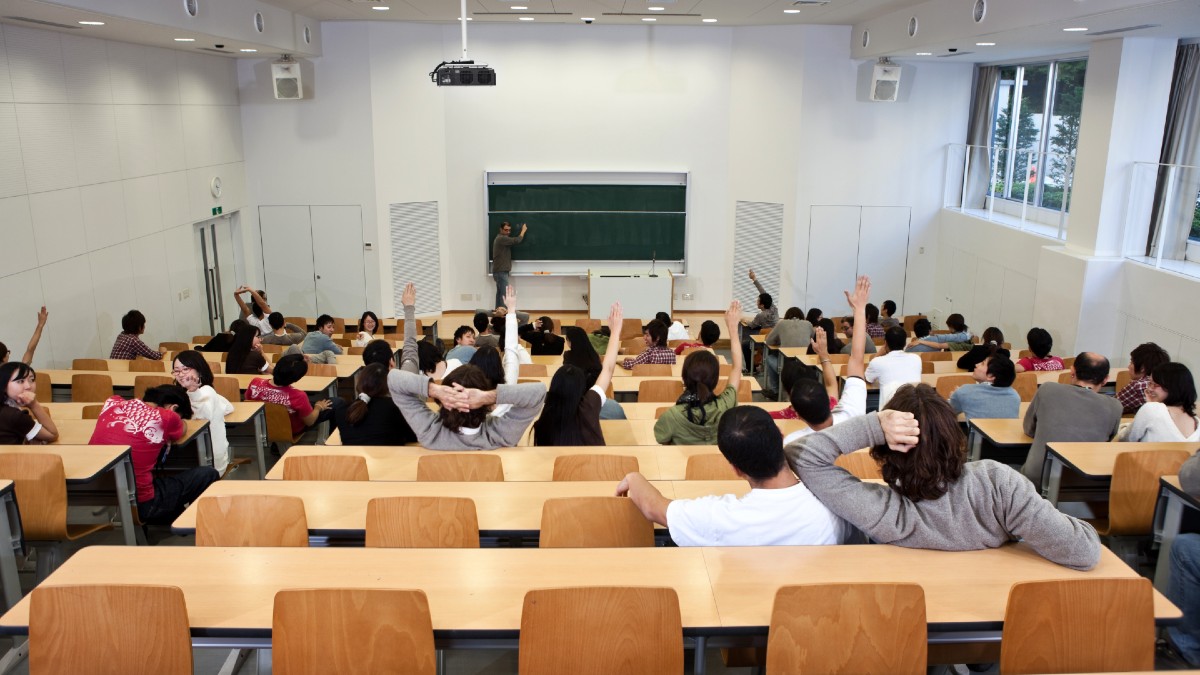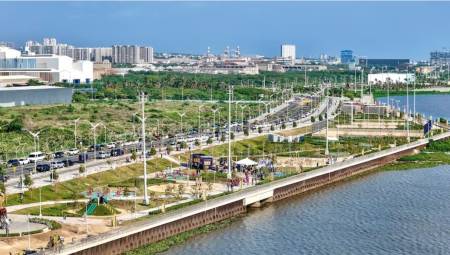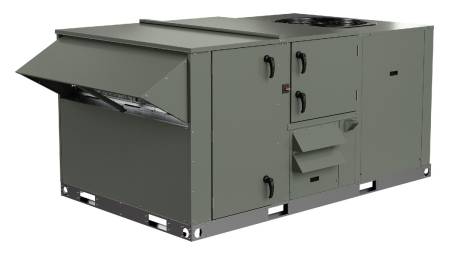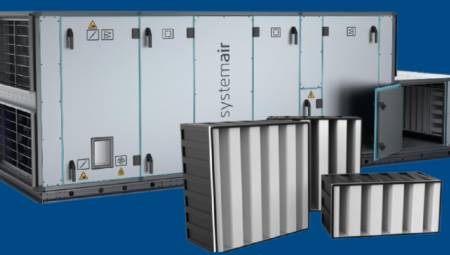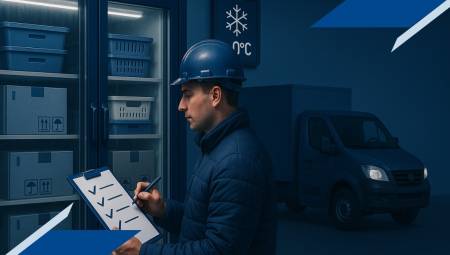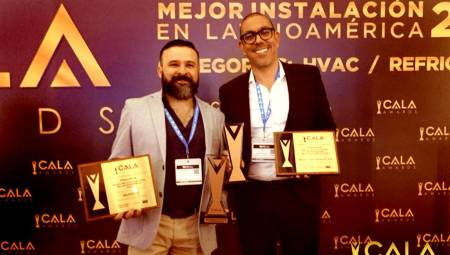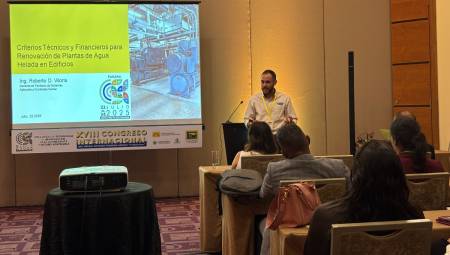Indoor environmental quality (IEQ) in educational spaces is a determining factor in the health, productivity, and academic performance of students and teachers.
by Ernesto Porras*
Two of the most relevant aspects within the IEQ are thermal comfort and indoor air quality (IAQ), as they directly influence the concentration, cognitive performance and general well-being of the occupants.
The design and operation of educational buildings must guarantee optimal conditions for these parameters, aligning with international regulations such as ASHRAE 55 and ASHRAE 62.1, in order to provide healthy and efficient environments. Throughout my experience as an HVAC consultant and recently in the context of my Master's studies in Bioclimatic Architecture, I have analyzed how these factors can be managed through specific strategies of passive design, efficient HVAC systems and controlled ventilation with the aim of developing high-performance buildings adapted to the climatic and operational conditions of each project.
One of the challenges in the design of educational spaces is the high density of occupancy in classrooms that can exceed 30 students per enclosed space, which accelerates the accumulation of CO2 and other pollutants. In addition, thermal comfort in these spaces is not only related to air temperature, but also to average radiant temperature, air velocity and relative humidity, parameters that must be adjusted according to the metabolic activity and occupancy cycles of each space.
Thermal comfort: impact on health and productivity
Thermal comfort is defined as the condition in which a person expresses satisfaction with their thermal environment. In educational environments, the concept of thermal health becomes relevant due to the negative effects that inadequate temperatures can have on learning capacity. Research has shown that in classrooms where wind chill changes from warm to neutral, academic performance improves significantly. In particular, reducing the temperature from 25ºC to 20ºC can increase the results in mathematics and language tests by up to 12%.
Thermal comfort in educational environments is affected by high occupancy density, low metabolic activity of students and variability in classroom use cycles. Unlike offices or homes, where users have a certain degree of control over their environment, in classrooms the conditions must guarantee the simultaneous comfort of a large group of people with different thermal needs.
Factors that determine thermal comfort
Thermal comfort in educational environments depends on several variables that must be controlled in the design and operation of spaces:
- Air temperature and radiant temperature: the surface temperature of walls, ceilings and floors influences the general thermal sensation.
- Relative humidity: values outside the recommended range can generate a feeling of discomfort and affect respiratory health.
- Air velocity: A well-managed airflow contributes to the dissipation of body heat.
- Clothing and activity level: personal factors that determine thermal perception in the classroom.
Strategies to improve thermal comfort in educational environments
To ensure adequate levels of thermal comfort in educational environments, it is necessary to apply design and operation strategies that reduce the thermal load and optimise energy efficiency, such as:
Design of enclosures with low-e materials, thermal insulation and ventilated facades to minimise thermal gain.
Sun protection strategies such as sunbreaks, eaves and roofs with vegetation that reduce the temperature without associated energy consumption.
Implementation of natural and mechanical ventilation systems to avoid areas of overheating or excessive cooling.
Real-time monitoring of temperature and humidity to adjust the air conditioning according to occupancy and external conditions.
Indoor Air Quality: Health and Productivity in the Classroom
Indoor air quality is another key factor in educational environments. A classroom with poor ventilation and high CO2 levels can reduce student productivity by up to 20%, increase mental fatigue, and lead to symptoms such as headaches, eye irritation, and drowsiness.
The control of pollutants such as CO2, particulate matter, volatile organic compounds (VOCs) and microorganisms is essential to guarantee healthy spaces. The ASHRAE 62.1 standard establishes minimum ventilation rates, but studies have shown that increasing these rates by up to 30% above the standard can significantly improve occupant health and productivity, reducing fatigue symptoms and improving information processing ability.

Strategies to improve indoor air quality in educational buildings
To ensure adequate IAQ, specific ventilation and contaminant control measures must be implemented, such as:
- Increase effective ventilation by combining natural and mechanical ventilation to constantly renew the air and maintain CO2 levels within optimal ranges.
- Reduce indoor pollutants by selecting materials with low emissions of volatile organic compounds (VOCs) and avoiding cleaning products with harsh chemicals.
- Implement advanced filtration systems that include at least MERV 13 or higher filters in HVAC systems that ensure the removal of fine particles and gaseous contaminants.
- Monitor indoor air quality in real time using CO2, humidity and temperature sensors that allow ventilation strategies to be adjusted according to environmental conditions.
Impact of indoor air quality on academic performance
Extensive academic literature supports that achieving optimal indoor air quality brings relevant results in terms of productivity and learning, such as:
- Maintaining CO2 levels below 900 ppm can improve student response speed by 12% and accuracy by 2%.
- Doubling ventilation rates can improve performance in math and text comprehension activities by 8%.
- For every liter/second per person of additional fresh air, absenteeism can be reduced by up to 1.5%.
Strategies to optimize environmental quality in educational spaces
Thermal comfort and indoor air quality are closely linked. The perception of well-being in a space does not depend only on temperature, but also on air circulation and purity. A classroom with an adequate temperature, but without sufficient air renewal, can generate CO2 accumulation and affect the concentration of students. In the same way, high ventilation without thermal control can generate discomfort due to drafts or unstable temperatures. To avoid these problems, it is necessary to integrate design and operation strategies that simultaneously optimize both variables, as I summarize below:
Thermal management and combined ventilation: In hot climates, ventilation should be designed to reduce the thermal load without generating overheating. Cross ventilation, the use of solar chimneys and the thermal inertia of some materials allow this balance to be achieved without excessive dependence on mechanical systems. In classrooms with intermittent occupancy, systems that allow for rapid air conditioning prior to student entry can be an effective solution.
Humidity control: high humidity can increase the sensation of heat and promote the proliferation of microorganisms, which ends up affecting indoor air quality. In schools located in areas of high humidity, the design should consider materials with low water absorption, ventilated roofs and condensation drainage systems to prevent moisture accumulation in walls and ceilings. Passive and active dehumidification strategies combined with demand-controlled ventilation can avoid these effects without generating energy cost overruns.
Adaptive ventilation systems: educational spaces with high variability in occupancy require systems capable of adjusting ventilation and air conditioning according to real demand. CO2, temperature and humidity sensors can activate air renewal strategies when pollutant levels exceed the recommended values, improving air quality and thermal comfort without generating unnecessary consumption. In addition, a system that regulates the amount of fresh air according to the number of occupants can prevent CO2 spikes that affect cognitive function.
Integration of the envelope with indoor air quality: the design of the façades and the orientation of the building have a direct impact on the need for ventilation and mechanical air conditioning in a classroom. Buildings with strategically oriented windows can take better advantage of natural ventilation and minimize internal thermal gain. In addition, the use of solar control glass, reflective surfaces, and ventilated covers can reduce the thermal load and allow classrooms to maintain a comfortable temperature without the need for constant forced ventilation.
Applying these strategies makes it possible to design educational spaces that guarantee a stable, healthy and energy-efficient indoor environment, avoiding costly corrective interventions and ensuring optimal living conditions in the long term.
Conclusion
Thermal comfort and indoor air quality are decisive in the design of educational buildings, directly impacting concentration, learning and academic productivity. Maintaining controlled environmental conditions reduces absenteeism and improves the health and well-being of students and teachers, ensuring environments conducive to academic performance.
The optimisation of the building envelope, the efficient regulation of ventilation and the reduction of indoor pollutants make it possible to generate healthy and sustainable spaces without compromising energy efficiency. The application of adaptive strategies and real-time monitoring facilitate the regulation of temperature, humidity and ventilation depending on occupancy and external conditions.
The design of educational environments must integrate a bioclimatic and efficient air conditioning approach, ensuring that indoor conditions are conducive to learning and well-being. Implementing these strategies contributes to high-performance buildings that respond to current and future educational needs.
*Ernesto Porras is a Mechanical Engineer and consultant in air conditioning and bioclimatic with more than 17 years of experience in the design of energy-efficient and sustainable solutions. As founder and director of Consultoría y Diseño en Climatización S.A.S. (CDC), he leads consulting, design and commissioning projects, ensuring that air conditioning contributes to well-being, energy efficiency and sustainability. He has participated in strategic projects such as Thermal Districts Colombia Phase II for UNIDO and the National Roadmap for Net Zero Carbon Buildings, promoting the transition towards more efficient and resilient buildings. In addition, he is an international lecturer and trainer in air conditioning and sustainable construction, with the purpose of transforming the industry and promoting environments that optimize the quality of life of its occupants. Contact: [email protected] or WhatsApp: (+57) 314 389 85 52.


